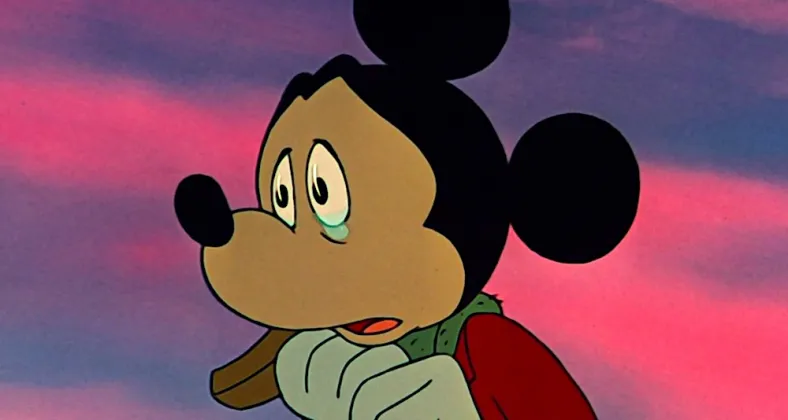
On September 7, 1979, Lee Leanard said the first words ever heard on ESPN: ” If you’re a fan, what you’ll see in the next minutes, hours, and days to follow may convince you you’ve gone to sports heaven.” This is the case with Disney’s most profitable endeavor.
Leanard had no way of knowing just how right he was. The Rasmussen family (not the famous one) had come up with the idea of a cable network for local sports events in Connecticut. It turned out it was actually cheaper to buy a satellite dish and broadcast across the entire United States. The Rasmussens found a moneyman, Stuart Evey, who believed in their idea enough to push them out of the company they had founded.
ESPN initially made its name broadcasting college sports. Most of their content was stuff like college soccer, wrestling, boxing, and baseball. College Football was out of their league… Kind of. It turns out there were plenty of people who wanted to see what their college was doing on the gridiron, even if their college wasn’t Michigan or Alabama. But they did very well with college Basketball. The match-up against Magic Johnson and Larry Bird was what caught Annheiser-Busch’s attention. The Bud contract was the biggest in the history of cable up to that time.

RELATED: MasteroftheTDS Exposes Disney’s Bot Deployment In Support Of Blackwell Capital
The little sports channel that could sign a deal with the NBA in 1982. It was now competing with the Big Three: ABC, CBS, and NBC.
In 1983, The USFL debuted on ESPN and ABC. This partnership would prove particularly fruitful for ABC.
It’s important to remember something about this time period.
In the 1950s, forests of antennas had sprouted up in every city, suburb, and rural area. New homes were routinely built with an antenna tower. But by the mid-1980s, they were withering away rapidly. New middle-class suburbs would have covenants specifically banning them. Subscription channels like HBO, Cinemax, and The Disney Channel had become ‘must haves’ for the status-minded, and that meant cable. In 1978 only 20% of homes had cable, by 1988 it was better than 50%.
Big changes were coming to a business that hadn’t changed all that much since the 1950s.
Ad-supported channels were cropping up next to them. A decade before there were only three networks, now there were close to thirty. VCRs were becoming as common as TV sets, and Neilson had no idea how to apply ratings to a show that had been “taped” instead of watched. Sports were the big reason VHS would win the format war.
In 1984, Evey sold out his company’s interest in ESPN to ABC, with twenty percent of the stake going (eventually) to the Hearst Corporation.
This was the best buy in the history of ABC. By 1987 signed its first deal with the NFL. The USFL was a rather comical memory by then. ESPN had long overshadowed ABC Sports by the time. Michael Eisner made the best decision of his executive career in 1996, buying ABC for $19 billion.
While it is fair to say that ABC was still a valuable asset, it was an asset that was diminishing in value. ESPN was the real goldmine for Disney.
It remains so to this day.
But for how much longer?
If you have cable, a big chunk of your bill is for ESPN. Right now, ESPN generates $8.1 BILLION in affiliate revenue. Now, that is gross, not net, but the net is enough to float the entire Disney company.
I’d railed against Iger’s decision to sell part of Disney’s stake in ESPN. Id thought the idea of Disney getting into sports gambling was ludicrous. Sure there’s money in it for now, but FanDuel’s revenue is $3.2 billion. I mean do the math Bob.
However, the Dark Herald was wrong.
Disney needs to dump ESPN now while they can still get a decent price for it.
Darklings: Okay, what changed?
Amazon is now the home of Thursday Night Football. If you want to see that now, it’s going to be on Prime. Amazon’s new head of sports, Matt Newman, said, “Amazon is in for the long game.”
Those contracts at ESPN are going to come up for renewal sooner or later, for the last thirty years, no one could compete with Disney’s bids for those contracts. However, Amazon, Apple, and even Netflix will have no trouble outbidding Disney.
Of those three horsemen of the cable apocalypse, Apple is the one on the Pale Horse. Apple has always preferred to build slowly from within rather than buy big. They are definitely building a sports division from the ground up. I thought the Apple Vision Pro was a folly. I had written it off as the new Newton, but combined Vision Pro with a fully integrated sports division then, I’m a believer.
Regardless, Disney is not the biggest kid on the block anymore. Mickey the Great and Terrible is not going to be able to hang on to those contracts.
ESPN, the backbone of the Walt Disney Company, is doomed.
And without ESPN, so is Disney.
What do you think of ESPN’s problems and Disney’s growing issues? Leave a comment and let us know.

If they stayed out of Politics, ESPN wouldn’t be on Death’s Door but they did anyways. Stick to Sports.
I don’t think even UFL can save ESPN.